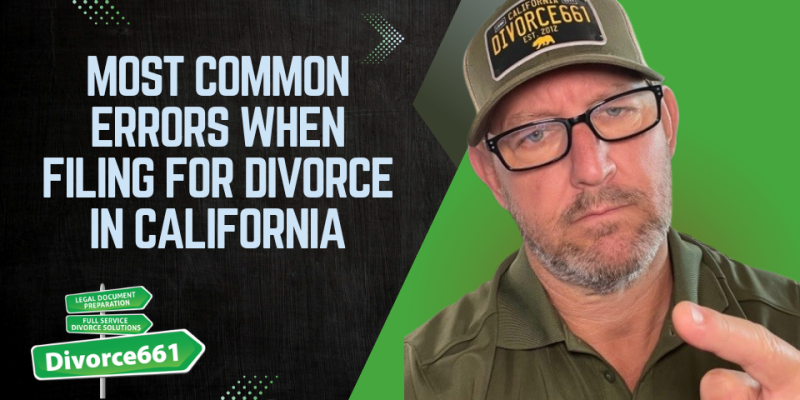Most Common Errors When Filing for Divorce in California
Filing for divorce can be a complex and stressful process, especially when it comes to completing the required paperwork accurately. As someone who has helped many clients navigate this journey, I’ve noticed several common mistakes people make on the divorce petition form known as FL-100. Understanding these errors can save you time, reduce frustration, and help ensure your case moves forward smoothly.
Understanding the Divorce Petition (Form FL-100)
The divorce petition, or Form FL-100, is the foundational document in California divorce proceedings. It initiates the legal process by outlining the parties involved and the relief requested. Because this form sets the tone for your case, accuracy is crucial. Errors or omissions can cause delays, additional court visits, or even dismissal of your petition.
Why These Errors Happen
Many people come to me after struggling with the filing process. The mistakes often stem from confusion about what information is required or how to properly complete each section. Sometimes, individuals attempt to complete the form without legal guidance, which increases the likelihood of mistakes.
Common Errors on Form FL-100
- Incorrect Personal Information: Failing to accurately list names, addresses, or dates of marriage can create confusion and delay your case.
- Incomplete or Missing Sections: Leaving sections blank or incomplete, such as the grounds for divorce or requests for child custody, can lead to follow-up requests or rejection of the petition.
- Improper Service Details: Not properly documenting how your spouse will be served with the petition is a frequent error that can halt proceedings.
- Failure to Check Appropriate Boxes: The form includes specific checkboxes for issues like community property, spousal support, and child custody. Missing or incorrectly checking these boxes can affect your rights and the court’s understanding of your requests.
How to Avoid These Mistakes
To prevent these common pitfalls, it’s important to approach your divorce petition methodically:
- Read Instructions Carefully: Take your time reviewing the form instructions and understand each section before filling it out.
- Gather Complete Information: Have all necessary details at hand, including full names, addresses, marriage dates, and any agreements or requests related to children and finances.
- Consult Legal Resources or Professionals: If possible, seek advice from a family law professional or a reputable legal aid organization to review your petition before filing.
- Double-Check Your Entries: Review the completed form to ensure all sections are filled out correctly and completely.
The Benefits of Properly Filing Your Petition
Submitting a clear, accurate divorce petition helps your case proceed without unnecessary delays. It also reduces the stress of additional court appearances or paperwork corrections. When done right, you set a solid foundation for resolving your divorce efficiently and fairly.
Final Thoughts
Filing for divorce is never easy, but avoiding the most common errors on Form FL-100 can make the process smoother. Remember, this form is your first step in a legal journey, so taking care to complete it correctly is essential. Whether you do it yourself or seek professional help, accuracy and attention to detail are your best allies.
For those navigating divorce in California, understanding these common mistakes and how to avoid them can save you time, money, and frustration. Take the necessary steps now to ensure your petition is completed properly and your case can move forward without hiccups.
Tim Blankenship
Divorce661

